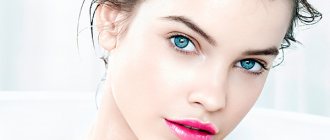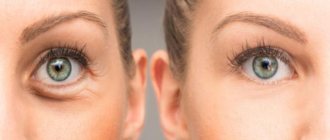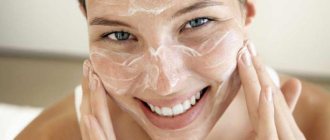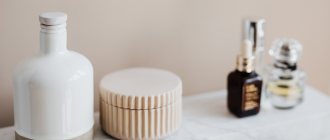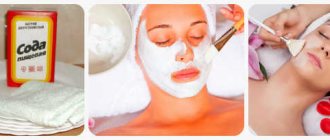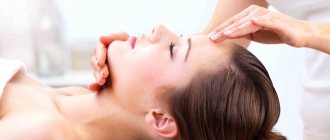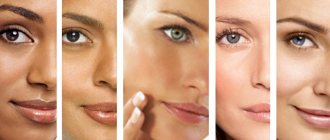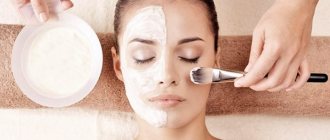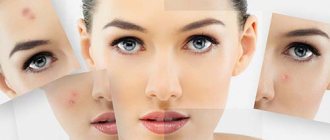Useful tips
Arms and legs are often the parts of the body that many people forget about when it comes to beauty. No matter how good you look, rough and dry hands
will noticeably worsen your overall appearance, and unkempt legs will steal the elegance from your gait.
The biggest “beauty mistake” is that people don’t think about proper care for their hands and feet. They take care of their face, while other parts of the body do not receive even that much attention.
What are the problems associated with arms and legs?
One of the main problems is dryness combined with roughness of both hands and feet. Cracked heels are another problem familiar to many. This all becomes especially obvious and aggravated in the summer, when our hands and feet are directly exposed to harmful ultraviolet rays, which leads to dryness, premature aging, darkening of the skin and various rashes.
And in the soaring heat of summer, feet in closed shoes are very vulnerable to fungal infections, psoriasis, calluses, and, of course, to an unpleasant odor.
Treatment
Acne itself is a disease. Once they appear in adolescence, you should consult a qualified dermatologist. If measures are not taken in time, pimples can increase in size, acquire a purplish-red hue, and in the worst cases, “unite” with each other and cause the formation of atrophic scars, which are quite difficult to get rid of.
Treatment of problematic facial skin in adolescents can be carried out both with the help of special medical and cosmetic procedures, and with the help of traditional medicine methods. The following products are great for treating teenage acne:
- Mask made from fermented milk products. It is necessary to apply one of the products (kefir, yogurt, sour cream, fermented baked milk, etc.) to the skin for 15 minutes, and then rinse with cool water.
- Egg mask. To prepare it, you will need whipped egg white, to which you need to add 3 drops of hydrogen peroxide (3%) and 3 drops of lemon juice. The mask is applied to the skin for 20 minutes.
In addition to the above, rubbing the skin with chamomile decoction helps get rid of teenage acne. In addition, salicylic acid (1% solution), intended for external use, is an excellent remedy.
Special cosmetic procedures are very effective for treating problem skin:
- Cosmetic cleansing, which can be carried out in several stages, depending on the condition of the skin. Often one session is not enough, so repeated cleaning is prescribed on the second or third day.
- Darsonvalization is a technique of hardware cosmetology, carried out by exposing the skin to a pulsed alternating current of high frequency, but of low strength. After the procedure, a special mask is applied to the surface of the skin.
- Medium or superficial-medium peeling, which is carried out using phytocomponents. The peeling procedure smoothes the surface of the skin, exfoliates the layer of dead cells and stimulates the formation of new cells.
- Medicinal ointments that are prescribed individually to each patient. They are recommended to be used for a certain period. Such ointments are necessary to restore the skin and prevent the appearance of new rashes.
Salon beauty treatments
There is an opinion that in adolescence it is too early to resort to salon cosmetic procedures. In fact, a good cosmetologist can offer you several types of professional treatments that can be applied regularly.
The following procedures are suitable for teenage skin:
- hardware skin cleansing;
- massotherapy;
- cryomassage;
- ozone therapy;
- superficial acid peeling;
- Darsonvalization - exposure of the skin to current pulses.
The best option is a combination of home and professional care. In this case, the skin condition will noticeably improve in the shortest possible time.
Preventing teenage acne
To prevent the appearance of skin problems during adolescence, careful and careful skin care is necessary during this period. It is during the transition period that it is most susceptible to the influence of various external and internal factors.
Skin care during adolescence includes the following procedures:
- Daily cleansing of the skin using a special lotion or gel.
- After washing, remove residual impurities and sebum with a mild tonic that does not contain alcohol.
- Taking a contrast shower with rubbing that increases skin elasticity.
- Ensuring skin regeneration with essential oils.
- Before going outside, apply a protective cream with glycerin to the skin.
In addition, you need to pay attention to the following points:
- Proper nutrition. It is necessary to exclude from the diet fatty refined foods that contribute to the formation of pimples. Food should be enriched with fresh vegetables, fruits, lean meat, dairy products and lean fish. Every day you need to drink at least 2 liters of liquid.
- Systematic exercise and frequent exposure to fresh air help saturate the body with oxygen, improve blood circulation, relax and calm the nervous system.
- You should wash your face at least 2 times a day in cool water. Mild soap, milk and gel can be used as washing products. You should visit the bathhouse once a week.
During adolescence, you should not do the following:
- Wash with hot water, which helps activate the sebaceous glands.
- Squeeze pimples, as this entails the appearance of an inflammatory process and the appearance of new pimples.
Make an appointment by phone or.
Cosmetologists recommend that all boys and girls, without exception, take proper care of their facial skin during adolescence, even if they do not have cosmetic problems.
You can recognize the onset of adolescence in adolescents by rashes on the face. Many girls and boys aged 12-17 are familiar with this phenomenon. It is from this period that you need to begin active skin type care.
Most often, teenage skin is problematic and prone to oiliness and acne. Under no circumstances should rashes on the face be allowed to spread! Otherwise, a teenager may approach the end of puberty with scars, age spots or a serious skin infection. Timely selection of the right care will help preserve the beauty of the skin, as well as avoid the appearance of complexes associated with appearance.
Features of teenage facial skin
As soon as girls and boys turn 11-12 years old, serious hormonal changes occur in their bodies. The growth of certain hormones affects not only their behavior, but also their appearance. Adolescent children experience a change in figure, personality formation occurs, and first love comes. At the same time, the activity of the sebaceous glands also increases, acne appears, the skin thickens and looks greasy. It is also rare that any teenager manages to avoid the formation of acne and inflammation on the face. Some children wage a grueling struggle with these unpleasant phenomena for several years.
Choosing cosmetics for teenagers
Skin in teenagers is divided into main types, just like in adults. But more often it is combination or oily; normal and especially dry types are rare at this age.
In salon and home conditions, caring for teenage facial skin will not be complete and effective without the use of cosmetics intended for this age. Such cosmetics differ significantly in composition from skin care products for adults.
Important: The main purpose of using special cosmetics is to normalize the secretion of the sebaceous glands, dry the skin, eliminate its greasiness, cure acne and pimples, relieve inflammation and irritation.
Many companies specializing in the production of skin care products produce lines of products for teenagers. They are usually presented as gels or foams for washing, drying tonics, and cleansing scrubs. If girls and boys do not have acne on their faces, during the period of hormonal changes in the body, you can get by with these basic cosmetics.
If you have cosmetic problems in the form of rashes on the face and inflammation of the skin, you need to take care of your skin during adolescence using special products. Commonly used:
- lotion for deep cleansing of pores;
- shower gel;
- moisturizing milk;
- soothing cream;
- drying gel;
- matting agents;
- anti-acne products.
If you exclude the use of cosmetics intended for teenage skin, acne marks - scars and cicatrices - may remain on your face in the future.
Main hand skin problems
The skin of your hands takes a lot of beating - daily washing of dishes, endless cleaning of the house, contact with detergents. All this does not add beauty to the skin.
Tightness, increased dryness
These are the main signs of insufficient hand skin care. It is necessary to pay special attention to daily basic hygiene procedures: use cream after washing, dry them thoroughly, beware of heat drying.
Feeling of roughness
These factors indicate a lack of fat and moisture. With the onset of cold, windy weather, these sensations may intensify. To get rid of them, use moisturizing and nourishing creams.
Cracks
They may indicate too frequent washing. This problem is faced by both housewives and doctors, beauty salon workers and doctors. It is those who wash their hands most frequently as part of their duties. Protect your hands while doing household chores with gloves and use nourishing creams.
Redness, cyanosis
If frequent redness does not appear due to exposure to wind or low temperatures, then you should consult a dermatologist.
Blue spots in young girls indicate hormonal disorders; with their appearance, a visit to a dermatologist should not be postponed. Protect your hands during the cold season.
Age spots at a young age indicate excessive exposure to ultraviolet radiation on the skin of the hands. To prevent their occurrence, use sunscreens designed for your hands or body.
Caring for problem skin of a teenager
To ensure that self-care for a teenager’s problematic facial skin does not harm, but rather improves the condition and appearance of the skin, it is important to carry out the following procedures:
- cleansing;
- toning;
- hydration;
- nutrition;
- treatment.
Particular attention should be paid to cleansing. For the procedure, products must be selected strictly according to skin type and its condition. Cleansing is carried out using gels and foams without alcohol, aggressive components, with a neutral pH. It is advisable that cleansers contain plant extracts. They relieve inflammation, promote healing and restoration of the epidermis, and regulate the functioning of the sebaceous glands.
After cleansing, apply a toning tonic or lotion. If there are growths on the face that are characteristic of this skin type, you can treat them with an antiseptic pencil or gel with a drying effect. This type of care will speed up the healing process.
If there are neoplasms on the face of teenage boys or girls - acne and pimples, care should also include treatment. Pharmacy products based on salicylic acid have proven themselves well. It penetrates deeply into the skin, removes excess fat, normalizes the functioning of the sebaceous glands and kills bacteria that cause the formation of such defects.
Please remember: Squeezing pimples, blackheads and other growths is prohibited. Such actions not only will not solve the problem, but will also worsen it and provoke the appearance of new defects.
How to care for oily skin as a teenager?
Most teenagers have oily skin. To reduce oil production, it is important to know what facial skin care products you can use at this age.
Girls and boys 12-17 years old should wash their face every morning and evening using a cleansing gel for oily types. Experts recommend treating your face with a 2% solution of salicylic acid 2 times a day.
Daily care is almost the same as for problem skin. To wash, you need to use boiled or distilled water. This type does not need moisturizing, but a nourishing cream should be used to provide it with useful substances.
Mattifying products - gels, creams, tonics and lotions - should always be in the arsenal of caring cosmetics for teenagers. Girls in adolescence begin to use decorative cosmetics. Mascara and lipstick of a neutral color will not harm, but it is better to avoid foundation. It clogs pores and causes acne and pimples.
What care does dry and normal skin require?
If the skin is dry or normal, facial care for teenagers should be minimal:
- In the morning, just wash your face with water using a special gel or foam, and pat your face dry with a towel.
- In the evening, cleanse with a cleanser for dry or normal skin.
- To avoid the feeling of dryness and tightness on the face, use mineral water for washing.
- After washing, it is useful to rinse your face with chamomile infusion or micellar water.
- At night, it is recommended to apply a cream for dry or normal skin with a moisturizing effect.
- Use a scrub once a week, but only if there is no inflammation on the face.
Golden rules for creating teenage manicures
- To perform a teenage manicure, you should be careful and, first of all, not allow infection to penetrate under the nail and skin. To do this, you should regularly disinfect instruments and any abrasions.
If burrs appear, they should be carefully trimmed with sharp nail scissors or tweezers. And lubricate the skin with any alcohol-containing lotion. - The cuticle should not be cut too short : it is enough to remove dead areas. When filing your nails, it is not recommended to do it too close to the skin in order to maintain the oval shape of the nail . This shape will look most attractive on the hands of a teenager.
- All tools (tweezers, nail scissors) must be disinfected and sharpened . This will allow you to quickly remove the cuticle, trim your nails and give them the desired shape.
How to help your child get a beautiful manicure, watch the video.
Using pastel-colored varnishes during school and brighter, but healthier ones in the summer, you can create unique and attractive decorative coatings.
Homemade facial skin care products for teenagers
Self-care for teenagers can be done using home remedies. They are natural, safe and effective.
When caring for teenage skin at home, they use masks, compresses, and scrubs. To improve the condition of the skin, cleanse it, nourish it and moisturize it, two such procedures per week are enough.
Anti-oily skin mask
At home, masks are more often used among teenagers' facial skin care products. They are prepared based on decoctions of herbs, fruits, and food products.
To eliminate oily shine and reduce sebum production, the following recipe is suitable:
- Grate the laundry soap to make a teaspoon of shavings.
- Add the same amount of table salt and warm boiled water.
- Mix the ingredients and apply to the face.
- After 10 minutes, lightly rub the mask into the skin.
This product dries well and cleanses the epidermis of impurities, dead cells and blackheads.
Pore cleansing mask
This is another good skin care product for teenagers that deeply cleanses impurities and tightens pores:
- Beat the egg white with a whisk until foamy.
- Add a teaspoon of sugar to the protein, beat the mixture again.
- Divide the mass into two parts.
- Apply half of the mask to your face, and after 5 minutes, when it dries, whisk the remaining part again and reapply a layer of this product.
- After five minutes, wash with cool water.
Whitening mask for teenagers
If there are pigment spots on the skin or traces of post-acne, you can use the following whitening mask to care for a teenager’s face:
- Remove seeds and peel from fresh cucumber.
- Grate it.
- Mix two tablespoons of cucumber puree with a teaspoon of olive oil.
- Apply the mixture to the skin in an even layer for 20 minutes.
Skin soothing mask
Daily care for a teenager's facial skin, which is prone to inflammation and irritation, includes the use of soothing products. You can prepare this mask at home:
- Grate the peeled potatoes on a fine grater.
- Steam your face with herbal steam. To do this, you need to brew chamomile and calendula in a saucepan and hold your face over it for a while.
- Apply potatoes without squeezing out the juice.
- Cover your face with a cotton napkin.
- After 15 minutes, wash off the mask with herbal decoction.
When do you need advice from a teenage skin care specialist?
If self-care for teenagers' skin does not produce positive results - oil content does not decrease, acne does not go away, the skin looks unhealthy, you should consult a cosmetologist. A specialist may refer the teenager for an examination to identify the cause of problem skin.
Teenage girls and boys can regularly visit a cosmetologist to maintain healthy skin. The following procedures are carried out in the beauty salon:
- mechanical facial cleansing;
- hardware cleaning;
- superficial peeling;
- darsonvalization;
- cryomassage.
To carry out such procedures, cosmetologists use professional cosmetics for the care of teenage facial skin. It acts gently and gently, and the effect of such products is higher than that of store-bought cosmetics.
If you start taking care of your facial skin from the age of 12, when adolescence begins, you can avoid serious problems in the form of acne and acne.
Teenage manicure design ideas
The following options can be offered as examples for decorative coating:
- During the school year, a good French manicure will complement any outfit and add sophistication to your hands.
It is better to choose colors for a jacket that are neutral and not too flashy: pink and white, pearlescent shades of beige and lilac will look great on the hands of a teenager and will not become the object of criticism and comments from teachers.
An original version of a manicure for a teenager - a French manicure with a white pattern on the ring fingers
- Graphic drawing , abstraction in discreet shades of gray, beige, black or white will also be very relevant during the school period.
- Newspaper style is an excellent choice of manicure for school days.
- During the holidays and holidays, when you don’t have to go to school, all sorts of flights of fancy are possible.
Bright colors, bold designs and all kinds of decorations in the form of rhinestones, beads, pieces of foil and sparkles will help you express yourself, draw attention to your hands and add style to your look. - Leopard print in contrasting colors, snowflakes and animal figures - these themes are always attractive and relevant.
An example of a teenage manicure with graphic elements
Newspaper manicure for a teenager
An example of a bright manicure for a teenager in the “Hello, Kitty” style with decor from bows and rhinestones
Bright and contrasting “leopard” design for a teenager
You will find even more bright and original ideas for creating teenage manicure in the video.
Latest number
Newsletter
The topic that we will consider today is one of the most difficult and important for teenagers. In such a period of life when you need to be on top, when the first sympathy for the opposite sex appears, some teenagers experience skin problems. This problem is Acne!
Acne is an inflammatory disease of the sebaceous glands and hair follicles.
The onset of the disease usually appears in girls 2-3 years earlier than in boys due to earlier puberty.
An important role in the mechanism of acne formation is played by the structural features and location of the pilosebaceous follicles.
The secretion of the sebaceous glands (sebum) is directly influenced by androgens, male sex hormones, which are produced to varying degrees in both boys and girls. Puberty is characterized by an increase in hormone secretion and leads to an increase in sebum production. Thus, hyperseborrhea is one of the prerequisites for the appearance of acne.
As a result of increased secretion of sebum, blockage of the follicular canal may develop, which leads to lesions - the formation of open and closed comedones.
In addition to hyperseborrhea, an important factor in the development of acne is a violation of the keratinization of the epithelium of the follicular canal and the closure of the follicle lumen with horny scales. The accumulation of sebum and keratinocytes sticking together creates “horn plugs” that block the follicular canal and prevent sebum from flowing to the surface of the skin. This accumulation of cells leads to the formation of open and/or closed comedones.
In turn, blockage of the ducts leads to a complete cessation of oxygen access to their cavity. The created oxygen-free conditions are optimal for the anaerobic bacteria Propionibacterium acnes inhabiting the sebaceous follicle. Microorganisms in such conditions multiply intensively and release substances that damage the wall of the ducts and glands. The strength of the follicle wall decreases, which leads to their rupture, release of contents into the dermis and the development of inflammation.
Can a teenager outgrow acne?
Modern ideas about acne have changed radically. Thus, the previously prevailing approach that “acne can be left untreated”, “the child must outgrow it”, is categorically unacceptable. Acne is a chronic disease that is accompanied by periodic exacerbations and increasing severity of clinical manifestations, which leads to the formation of scars, age spots and other manifestations of post-acne. Considering the special psycho-emotional background of adolescents, the presence of acne and scars on the face causes them psychological discomfort and reduces their social activity.

